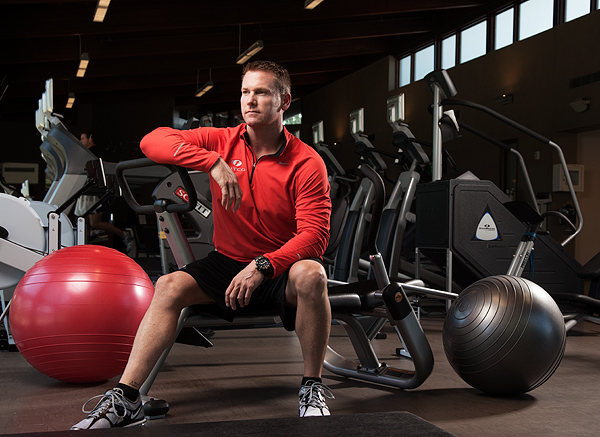In the 11 years since launching his company, Jason Kos, CEO of FITCO, has watched demand for corporate fitness programs soar. On-site exercise facilities have become an employee recruiting and retention essential, as companies invest in worksite wellness programs to help ward off long-term sick leave and disability claims.
The trend has been a welcome one for Kos, whose Carrollton-based company helps design corporate exercise facilities and install premium fitness equipment. With clients like Dell, Chick-fil-A, and Blue Cross Blue Shield, revenue now tops $20 million—and business is booming.
It used to be that companies would have “an old file room with a few treadmills in it” as an in-house fitness center, Kos says. “Those days have changed.” Along with fully staffed workout facilities, they’re providing kitchens stocked with healthy snacks, balance balls as desk chairs, and treadmills in conference rooms.
“The idea is to perform your job while burning calories,” Kos says. “We encourage our team to use part of their day to exercise because we know the increased blood flow stimulates creativity and productivity.”
The strategy seems to be working: FITCO expects revenue growth of 21 percent this year.
Things really began to take off for the company after its executives began incorporating Zappos CEO Tony Hsieh’s leadership strategies, which support an “employee-first” culture. “I felt like there was a better way in a turbulent time to engage employees, and have fun,” says Kos, who holds a master’s in psychology. “It is the boldest move I’ve ever made.”
And a profitable one, too: In 2011, the year FITCO fully implemented its “cultural transformation,” revenue grew 51 percent.
Kos devised a program called CultureFIT, which emphasizes employee empowerment and personal health. The company now has a director of happiness, whose job it is to spread cheer. Employees are given a half-day off each month to pursue personal interests. Then there’s “the office,” an exercise-equipment showroom that doubles as the staff fitness center; an ideation area sprinkled with toys and balance-ball chairs; and a well-stocked kitchen. The “serenity room” is a guilt-free retreat for a therapeutic nap or rest.
The cost of keeping employees happy is well worth the results, says Kos, who reports a $3 return on every $1 spent on culture.
Because it has worked so well for FITCO, Kos is now offering the CultureFIT program to others, especially small and midsize companies. “It allows us to be more intentional about practicing what we teach, as well as continually challenging us to stay on top of new trends and stay engaged on another level,” Kos says.







